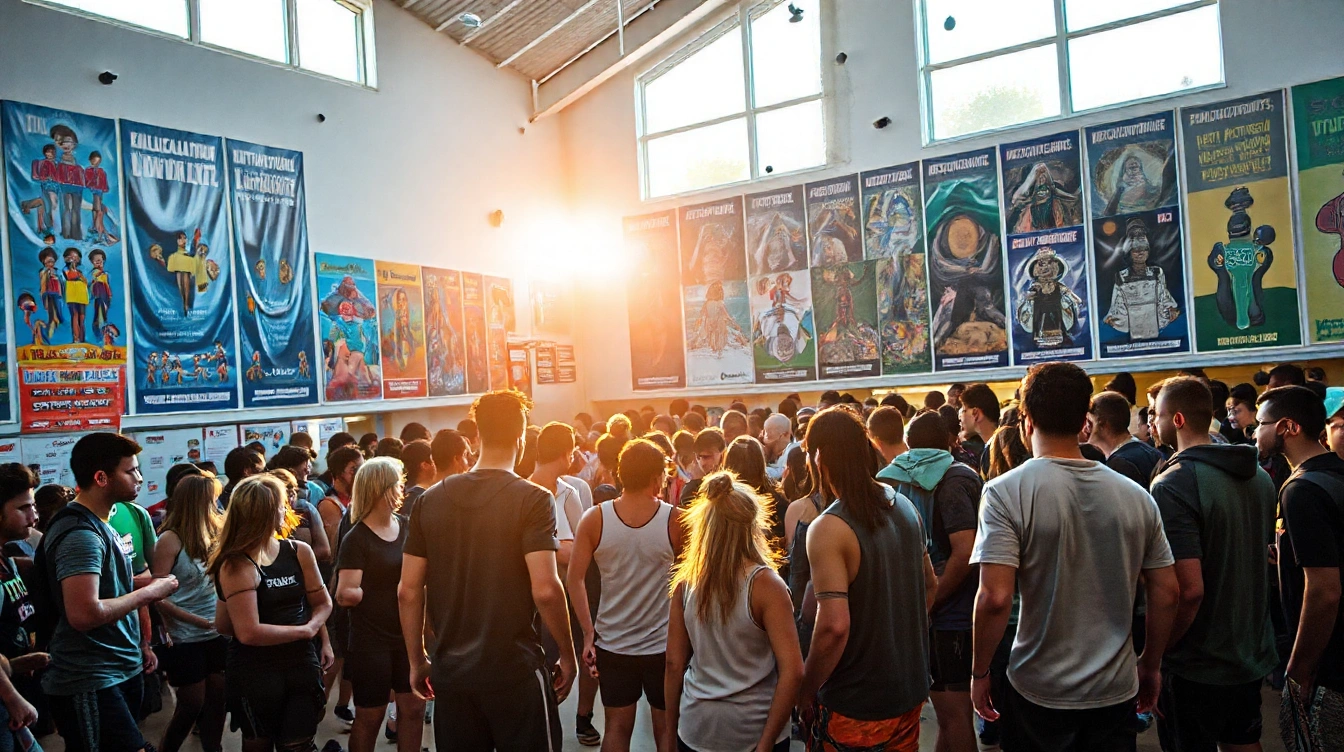Practical Strategies for Raising the Profile of Non-Mainstream Sports in the UK
To boost UK non-mainstream sports visibility, targeted media campaigns are vital. These campaigns should focus on tailored messaging that appeals to diverse demographics, using platforms where potential fans are most active. For example, highlighting compelling athlete stories on local TV and radio can spark curiosity and build familiarity.
Enhancing digital marketing is another key strategy. Increasing recognition for lesser-known sports can rely heavily on engaging social media content such as behind-the-scenes footage, live Q&A sessions, and interactive challenges. These approaches foster community and allow fans to connect directly with sports beyond traditional coverage.
Additional reading : How are technological advancements impacting niche sports in the UK?
Moreover, strategic partnerships can significantly amplify reach. Collaborating with popular influencers or well-established brands merges audiences and lends credibility to non-mainstream sports. Aligning with mainstream organisations can open doors to broader exposure through shared events or sponsorships.
Together, these strategies for sports promotion create a multifaceted approach. They address visibility gaps by combining personalized outreach, digital innovation, and collaborative influence, essential for elevating UK non-mainstream sports visibility sustainably and effectively.
Also to read : What role does funding play in the development of niche sports in the UK?
Role of Government and Institutional Support
Government support for sports plays a crucial role in fostering athletic development across the UK. UK sport funding provides essential financial resources that enable both elite and grassroots programs to thrive. Leveraging government grants and funding opportunities allows sports organisations to invest in facilities, coaching, and community outreach, directly impacting participation rates and athletic performance.
Policy initiatives for grassroots sport focus on inclusivity and accessibility, ensuring that sports become an integral part of everyday life in communities. These policies often emphasise youth engagement, health benefits, and social cohesion, underpinning broader public health goals. At national and local levels, implementing supportive policies creates a structured environment where sport policies align with educational and health objectives.
Encouraging collaboration between public institutions and sports associations enhances coordination, resource sharing, and innovation. Such cooperation maximises the impact of government support for sports, delivering consistent opportunities for athletes at every level. Ultimately, institutional support nurtures talent pipelines and enhances the UK’s reputation on international stages, proving government involvement is indispensable for sustainable sports development.
Community-Based Initiatives to Boost Engagement
Small-scale actions often fuel big changes in community sports engagement. Organising inclusive local events and tournaments helps bring together diverse groups, making sports accessible and enjoyable for everyone. These events can rejuvenate interest in grassroots sports visibility by showcasing local talent and creating a shared sense of pride.
Building strong volunteer networks is another powerful tool. Volunteers act as the backbone of local sports clubs, providing support that goes beyond funding. Their commitment fosters a lively atmosphere where players, organizers, and fans feel connected. Recruiting and training volunteers can sustain this enthusiasm over time, ensuring consistent community involvement.
Local ambassador and outreach programmes amplify these efforts by giving a personal face to sports initiatives. Ambassadors from within the community inspire others, connect with potential supporters, and raise awareness about the benefits of participation. These programmes make sports more approachable and highlight the positive impact of local clubs.
Together, inclusive events, volunteer networks, and ambassador schemes serve as pillars that enhance community sports engagement and promote the ongoing growth of grassroots sports visibility in meaningful ways.
Case Studies: Success Stories in the UK
___
The UK has seen impressive growth in several non-mainstream sports, raising their profile and participation rates. One standout example is the rise of ultimate frisbee. Through community engagement and strategic partnerships with schools, clubs have effectively boosted visibility. This approach centered on making the sport accessible and fun, which resonated strongly with younger audiences.
Another notable case is the success of roller derby leagues. They utilized targeted social media campaigns and local events to attract diverse groups, fostering robust, passionate communities. These organisations combined grassroots enthusiasm with savvy marketing to generate sustained interest and sponsorship opportunities.
Key to these UK sports success stories is the emphasis on inclusive promotion, combining local outreach with digital platforms. Lessons for future initiatives include prioritising participant experience and empowering grassroots ambassadors. Effectively promoting non-mainstream sports depends on storytelling that highlights unique aspects while building a sense of belonging.
By examining these effective promotion examples, organisations can replicate strategies that balance enthusiasm with professional organisation—bridging gaps between niche appeal and broader public recognition. This model offers a promising path to elevate other undervalued sports across the UK.
Overcoming Challenges Facing Lesser-Known Sports
Smaller sports often face significant challenges for non-mainstream sports that impede their growth and participation rates. One major hurdle is the lack of funding and sponsorship. Unlike popular sports, lesser-known activities struggle to attract sponsors who can provide essential financial support for events, training facilities, and athlete development. This funding gap creates a cycle where limited resources restrict visibility, which in turn discourages new participants.
Another issue is media underrepresentation. Limited coverage means these sports remain off the radar for many potential enthusiasts. Media stereotypes can also influence public perception, often portraying niche sports as less exciting or relevant. This affects how athletes and fans feel about their community, reducing motivation and growth.
Logistical challenges such as inadequate access to specialized equipment and suitable venues further restrict participant numbers. These barriers to sports promotion can feel discouraging but are not insurmountable. Addressing these issues strategically can expand UK sports participation, fostering a more inclusive sports environment.
Efforts to overcome these barriers to sports promotion include engaging local communities, creating grassroots partnerships, and leveraging digital platforms to boost exposure and support for lesser-known sports.
Actionable Recommendations for Sports Organisations and Advocates
To effectively increase sports participation in the UK, sports organisations must adopt actionable sports promotion tips focused on community engagement and visibility. First, sports clubs should strengthen local outreach by partnering with schools, community centres, and workplaces. This builds a network that encourages diverse groups to get involved.
Leveraging digital tools is also essential. Using social media platforms for targeted campaigns can directly connect with potential participants, especially younger audiences. Clubs should maintain active online profiles, sharing regular updates, success stories, and upcoming events. This creates a dynamic, accessible presence that boosts awareness and interest.
Sports advocacy thrives when supported by clear communication and consistent messaging. Advocates can collaborate with local authorities and health organisations to promote the benefits of regular activity, aligning messages with public health agendas. Providing easy access to schedules, sign-ups, and resources through websites or apps reduces barriers to participation.
Finally, tapping into existing support networks and national resources ensures sustainability. Organisations like Sport England offer guidance and funding opportunities, while local councils can assist with facilities and outreach efforts. Combining these strategies helps foster a culture that values and increases sports participation in the UK.





